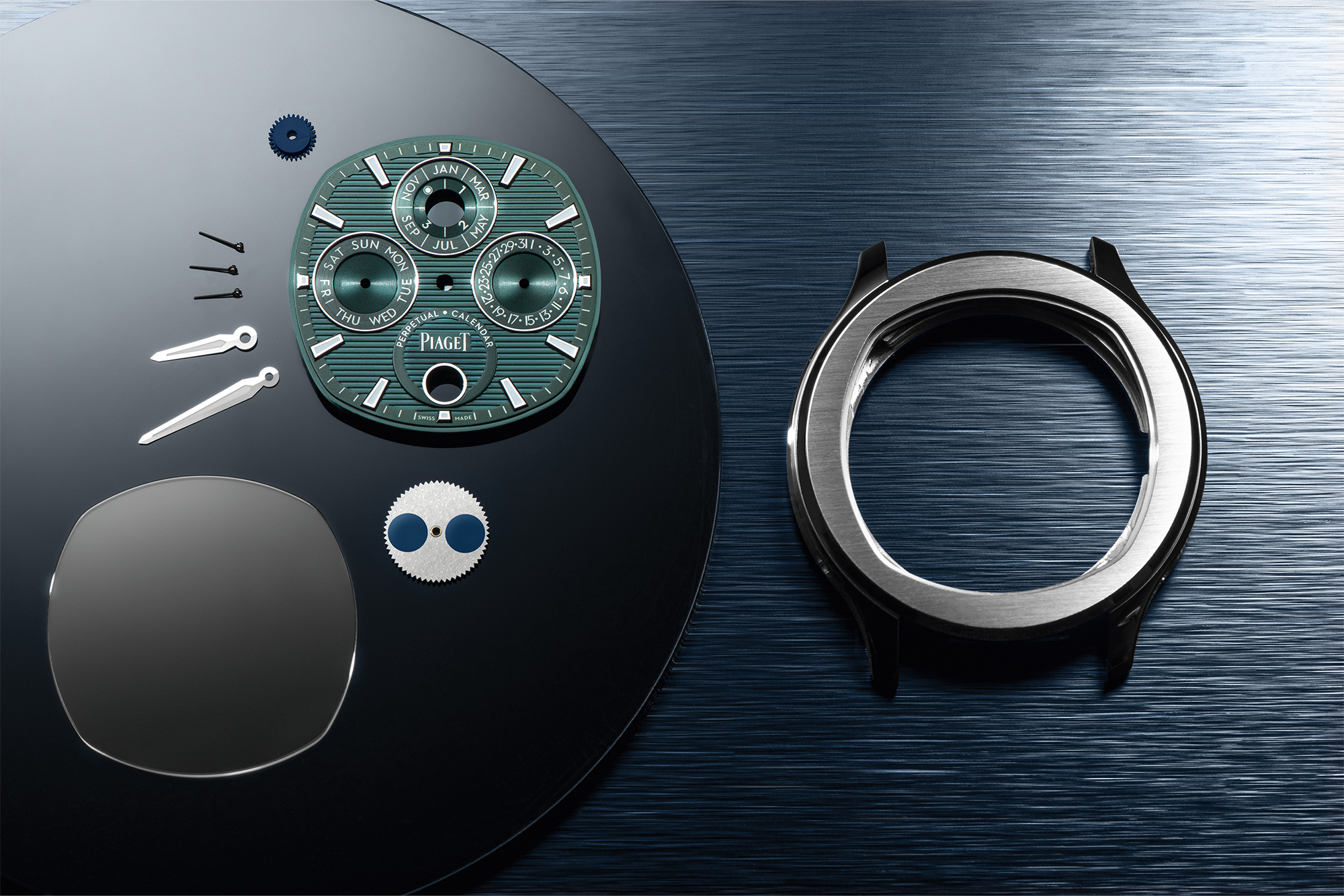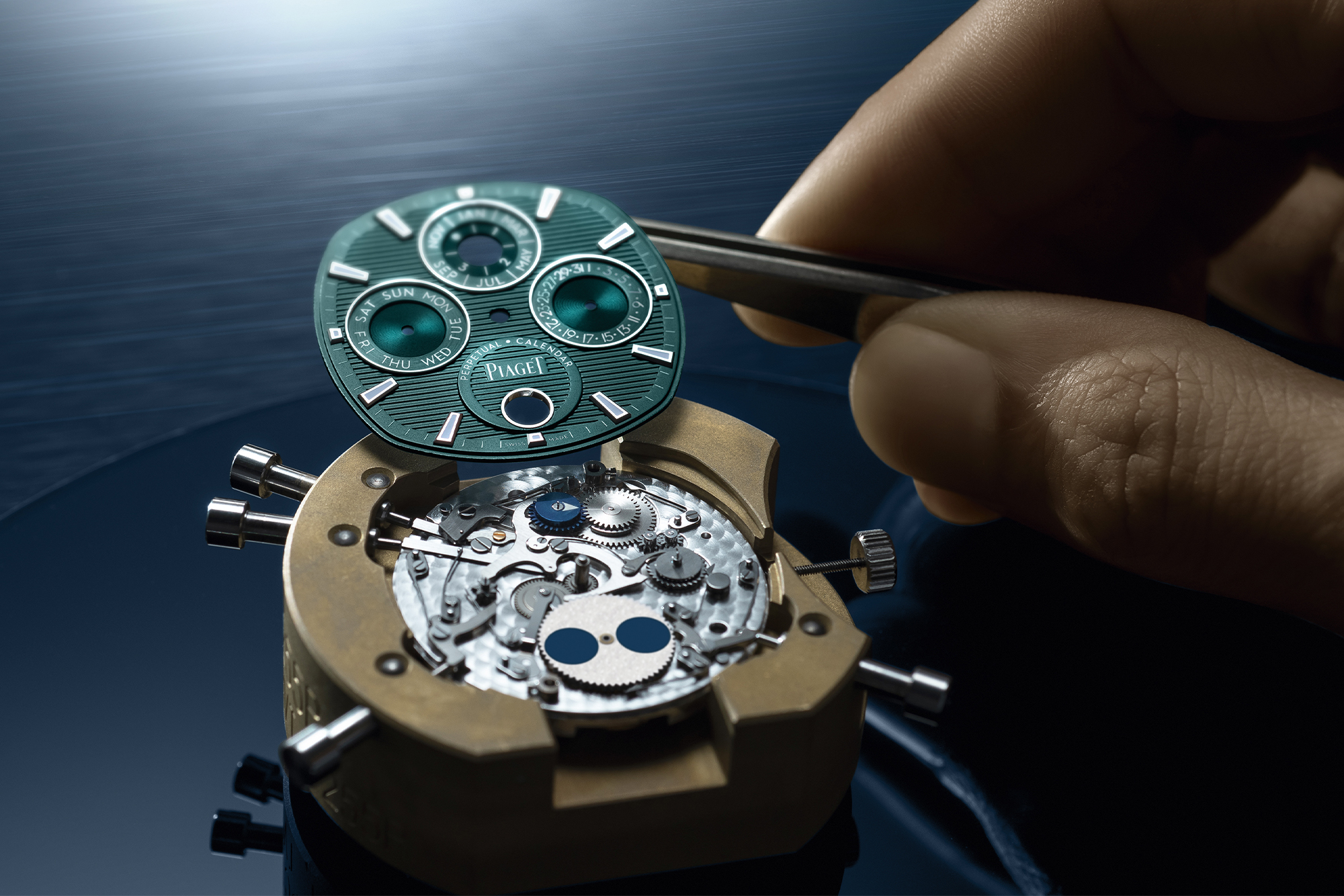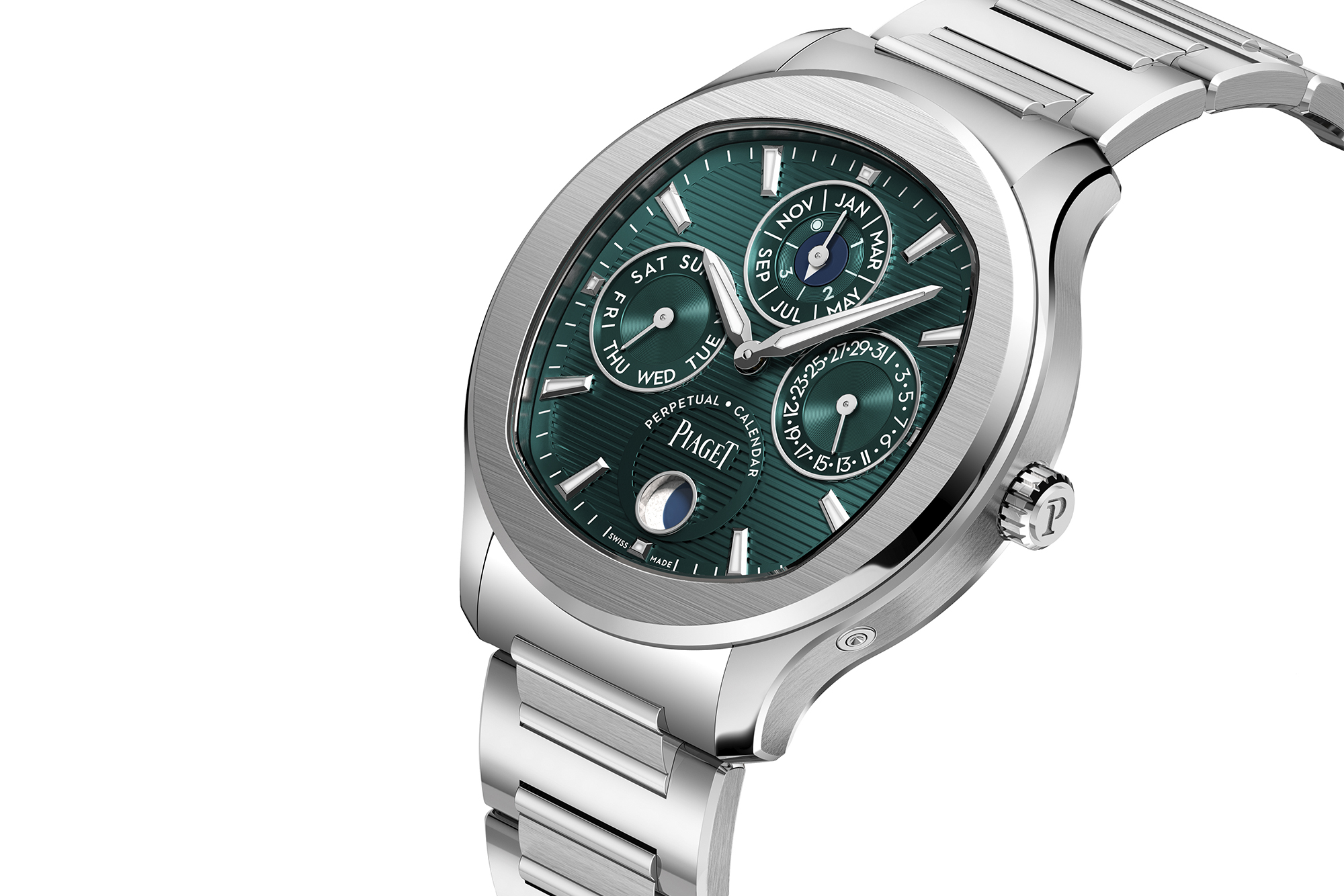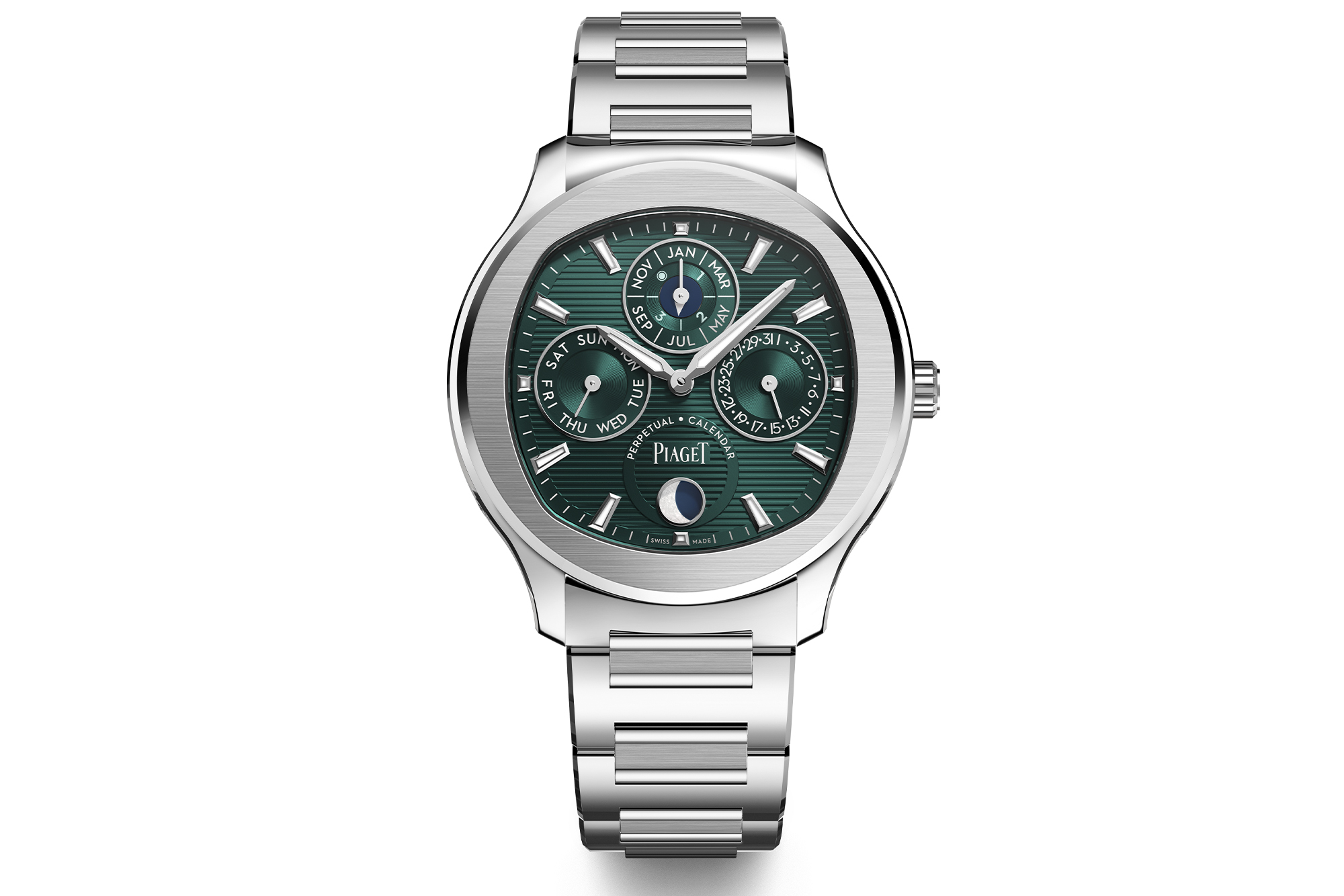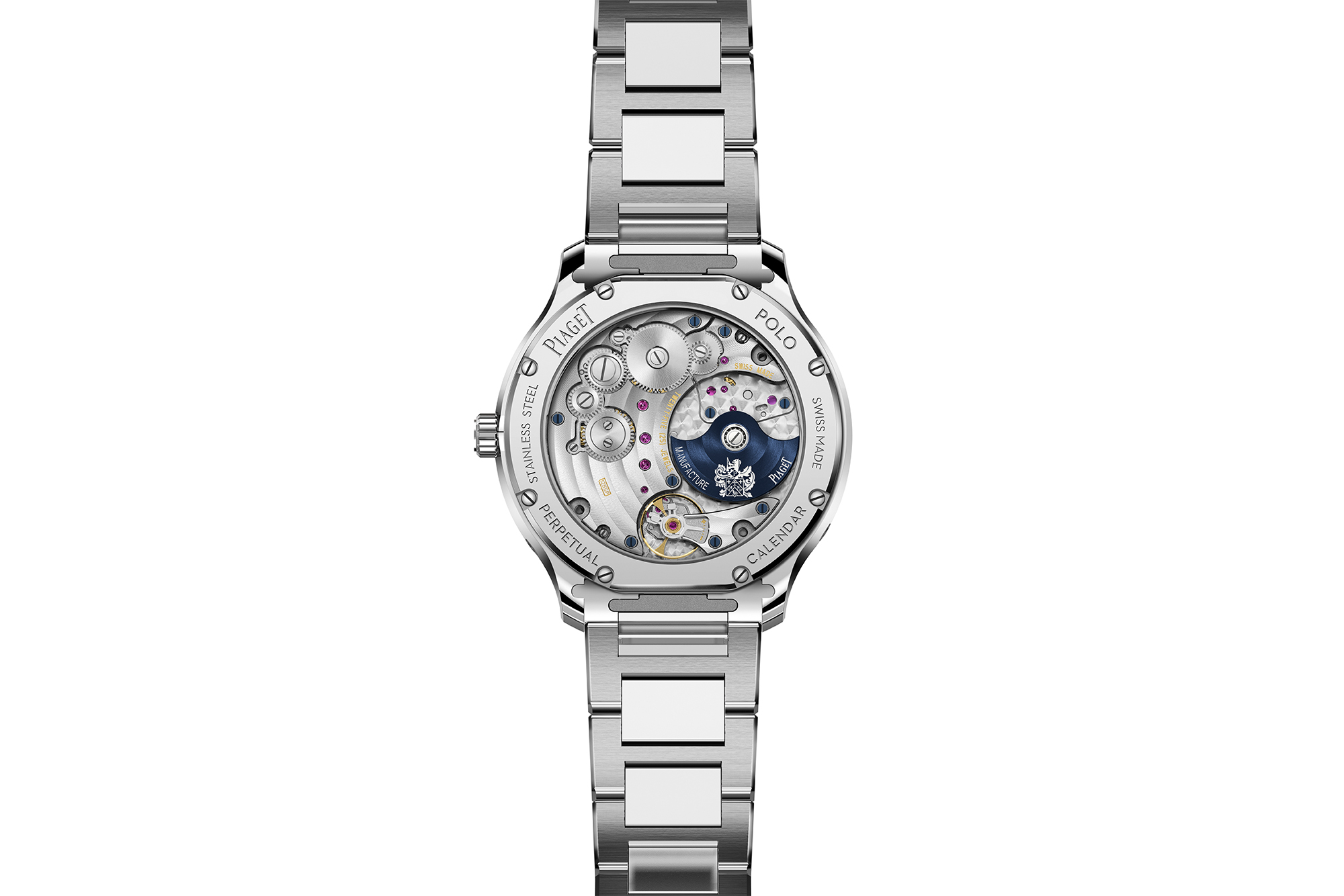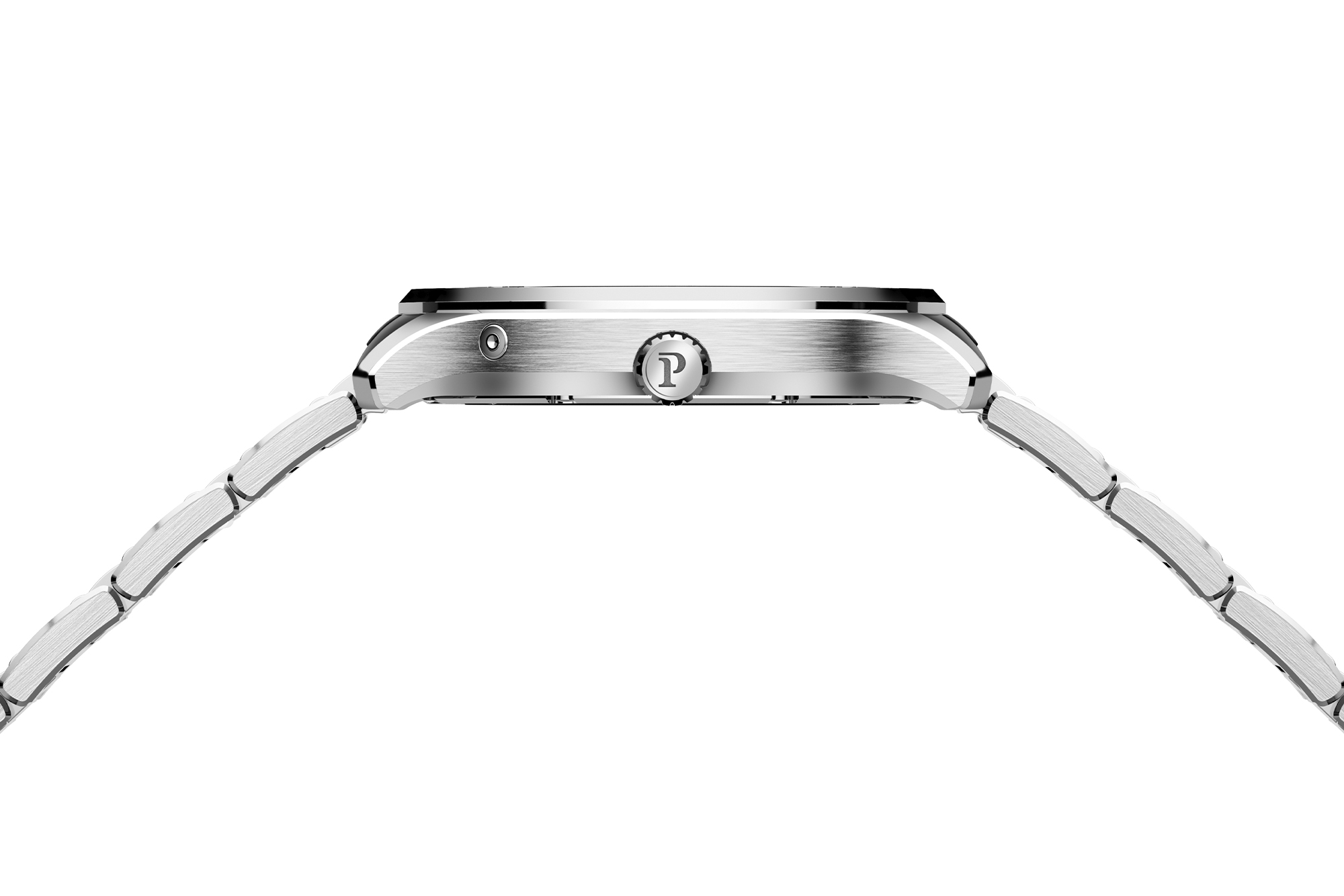The steel sports watch bracket is a bit crowded these days, but at its pinnacle — the world of perpetual calendar complications — the herd remains thin. By joining the fray, the Piaget Polo Perpetual Calendar Ultra-Thin instantly becomes one to watch. The brand has long been known for its stellar in-house manufacture calibers, and while the Polo has not reached the same fame as the Audemars Piguet Royal Oak or Vacheron Constantin Overseas, this latest launch is poised to change that in a hurry.
Let’s ignore the hype factors for a moment. Yes, green dials are still having a bit of a moment, as are steel sports watches. Those two things alone help amplify the excitement around the new Polo Perpetual Calendar, but that’s more the garnish of this horological dish than its protein. What really counts is that this is the first perpetual calendar in the Polo line since its refresh in 2016, the first steel perpetual calendar to be offered by Piaget, and a newly developed caliber with a clean new layout of all of the calendar’s indications.
The Piaget 1255P ultra-thin automatic movement is an evolution of a past caliber from the brand that adds a perpetual calendar and moonphase indication to the mix, all while keeping its proportions in check. the movement itself is a modest 4mm thick, with only 1.5mm of that being occupied by the aforementioned module. It uses a microrotor for self-winding, and delivers a power reserve of 42 hours. Fully assembled, the case of the watch is only 8.65mm thick, which won’t break any records, but still clocks in as thinner than the standard 3-hand model (at 9.4mm).
Where this conversation really gets interesting is when you look at what this watch competes with. Unlike the Polo Perpetual Calendar, things like the Vacheron Constantin Overseas Perpetual Calendar, and the Patek Philippe Nautilus 5740/1G are only available in precious metals, meaning you’re looking at a six figure price tag. The Audemars Piguet Royal Oak Perpetual Calendar can be had in steel or titanium for $80k USD, which is also quite the jump from the $75,000 CAD ask for the Piaget.
This will no doubt spark some level of debate, as the aforementioned competitors have been in the limelight for much longer, and their respective secondary market values are well above and beyond the retail price (if you ever manage to get your hands on one through an authorized retailer — good luck). That said, for those in the know, the quality and craftsmanship delivered by Piaget easily keeps up with the other “big guns” in the conversation. Piaget is also the source of many base calibers for the likes of Cartier and others within the Richemont group.
To put it simply, if let your watch selection be guided by clout and market returns, you might be the type to hold back and see where Piaget ends up in the next year or two. If quality, value, and heritage are your primary drivers, we’d be quick to suggest not sleeping on this one.


